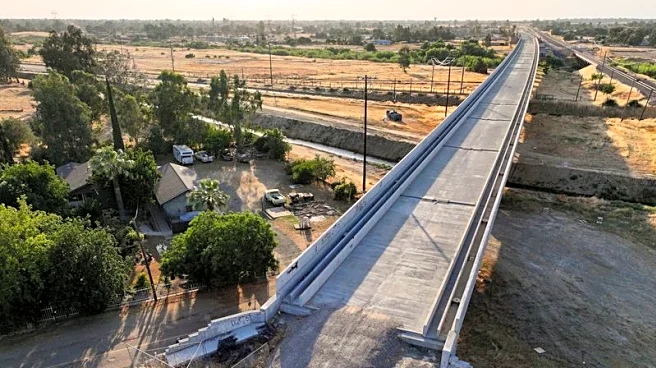What is the story about?
What's Happening?
A recent study has identified the Cascadia subduction interface as the source of a mysterious earthquake that occurred on December 21, 1954, near Humboldt Bay, California. The earthquake, which registered a magnitude of 6.5, was previously unexplained due to its unusual location and intensity. Researchers from the Seismological Society of America used modern methods and historical records to conclude that the earthquake was a thrust event located about 11 kilometers deep beneath Fickle Hill, east of Arcata. This discovery challenges previous assumptions about the seismic activity in the region, which is known for the Mendocino Triple Junction where the Pacific, Gorda, and North American tectonic plates meet.
Why It's Important?
The identification of the Cascadia subduction interface as the source of the 1954 earthquake has significant implications for understanding seismic risks in the Pacific Northwest. The Cascadia Subduction Zone is capable of generating massive earthquakes, such as the magnitude 9.0 event in 1700 that caused widespread destruction. Understanding whether smaller sections of the interface can rupture independently is crucial for assessing future earthquake risks. This research could lead to improved preparedness and mitigation strategies for communities in the region, which are vulnerable to seismic events.
What's Next?
The study opens new avenues for seismologists to explore the behavior of the Cascadia subduction interface. Further research may focus on whether smaller earthquakes can occur independently on the interface or if they are always part of larger megathrust events. This could involve revisiting historical seismic data and employing advanced modeling techniques to predict future seismic activity. Additionally, the findings may prompt updates to regional earthquake preparedness plans and infrastructure resilience measures.
Beyond the Headlines
The study highlights the importance of preserving historical seismic data and records, which can provide valuable insights into past events and inform future research. The collaboration among researchers to digitize and analyze old records underscores the need for comprehensive data management in seismology. This approach could be applied to other regions with complex seismic histories, potentially revealing new patterns and risks.
AI Generated Content
Do you find this article useful?

















